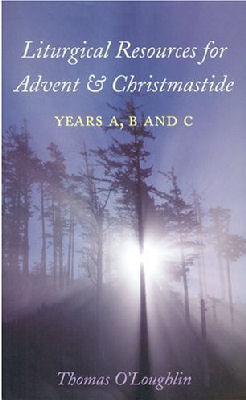
|
Posted November 29, 2007
Book: Liturgical Resources for Advent & Christmastide — Years A, B and C Author: Thomas O’Loughlin The Columbia Press. Black Rock, Co Dublin. 2007. Pp. 273 An Excerpt from the Jacket:
A. A Celebrant’s Guide which covers Introduction to the Celebration, Penitential Rite, Headings for the Readings, Prayer of the Faithful, Eucharistic Prayers (suggestions for Prefaces etc.), Invitation to the Our Father, Sign of Peace, Invitation to Communion, Communion Reflection, Dismissal. B. Commentaries on each of the readings and psalms. C. Homily notes Excerpt from the Book: First Sunday of Advent Year C 1. On this first Sunday of Advent the church’s thoughts are concentrated not on the coming of the Lord in Palestine two millennia ago, nor upon the new liturgical year, but on the Second Coming at ‘the end of time’. What do we mean by this curious phrase: ‘the end of time’? The End of Time has two meanings. There is the very obvious one of the cosmos coming to an end or the whole created order being radically transformed by God. The second meaning of the end of the world is the end of the world I as an individual inhabit: my world will come to an end at my death. In regard to the first meaning we have no information whatsoever within revelation as to when the universe will cease (this is a point worth making as there have been, and still are, many who engage in ‘scriptural mathematics’ using the Book of Daniel and the Apocalypse of John to find out how long more the world has got!) On the second meaning of the end of the world, my death, we are in a different situation: I may not know the day nor the hour (and am glad that I do not know this), but I am certain that I am going to die. Whatever happens in the future of my life, good things or bad things, I know that it will end. That end will be my end time, my eschaton. Whichever meaning we use, there is a common feature: at The End we must not imagine a giant chasm, but the figure of the Logos who shares a human nature with all approaching him as their priest, prophet, and king. Christ as King stands at the end of time gathering all the fragments of each of our lives, and of the life of the whole cosmos, and refashioning that existence so that nothing is lost. He gathers and refashions our life so that as a new creation this existence, my life, can be presented to the Father. The Good News is that the end is not a crunch, but the glorious figure of the Lord. The end is the gathering of all the little pieces of our scattered and fragmented lives, all our joys, all our collaborations with the grace of God, all the goodness we have sought to create, the peace we have fostered, the reconciliation that we have sought, the acts of kindness and mercy, the attempts to witness to the truth in the face of falsehood or injustice. All these scattered actions are gathered into a new existence that the Christ can offer to the Father in the Spirit. Table of Contents: First Sunday of Advent to Baptism of Christ |
|
